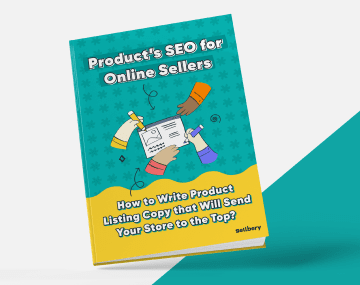
Shopify SEO isn't broken; it needs the right strategy. Optimize themes, content, and technical details to boost search visibility and improve sales effectively.
If you’ve been running a Shopify store for a while, there’s a good chance you’ve said something like, “I’ve done everything right, but I still can’t get my products to rank.” You’ve installed the apps, tweaked the meta tags, maybe even paid for a keyword tool. And yet… your traffic’s flat, your product pages are buried, and your competitors seem to be everywhere.
At that point, it’s easy to blame the platform. Shopify’s SEO reputation isn’t exactly glowing — and if you’ve spent time on Reddit or eCommerce forums, you’ve probably heard all kinds of complaints: “Shopify’s URL structure is a mess,” “You can’t control anything,” “Google hates Shopify.”
But here’s the thing: Shopify SEO isn’t broken. What’s broken is the approach most store owners are taking with it.
The truth is, Shopify can absolutely rank — and rank well — if you’re using the right strategy. It’s not about adding more apps or obsessing over every keyword. It’s about fixing the real issues that hold most stores back: bloated themes, weak content, and poor structure.
In this post, we’ll break down what’s actually hurting your Shopify store’s visibility and how to fix it — step by step.
Why Shopify SEO Gets a Bad Rap
Spend five minutes in a Shopify Facebook group or Reddit thread, and you’ll see the same frustration on repeat: “Shopify’s terrible for SEO.” And sure, there are some quirks that can make things harder than they need to be — but the real issue isn’t the platform itself. It’s how people use it.
One of the biggest complaints is about Shopify’s URL structure. By default, product and collection pages live in subfolders like /products/ and /collections/, which some store owners assume will hurt rankings. Spoiler: it won’t — not if the rest of your site is doing its job.
Another hot topic is duplicate content. Shopify creates multiple URLs for the same product depending on how it’s accessed (like via collections), which can cause problems… if you don’t handle it properly. The thing is, this isn’t unique to Shopify — it’s just more obvious because it’s baked into the platform. Most store owners don’t even realize it’s happening until their traffic flatlines.
And then there’s the “SEO apps” rabbit hole. It’s easy to think that installing a plugin or two will solve your problems. But most of those tools focus on surface-level stuff — like meta descriptions and alt tags — while ignoring the bigger structural issues that actually matter.
Here’s the reality: Shopify can absolutely rank. You just need to understand how Google sees your store — and build around that, instead of chasing surface fixes.
Your Theme Might Look Good, But It’s Slowing You Down
Most Shopify store owners spend a ton of time picking the “perfect” theme — something sleek, modern, with all the bells and whistles. And while a good-looking storefront matters, there’s a hidden cost to those bells and whistles: performance.
A lot of themes (especially ones overloaded with animations, sliders, and embedded apps) are bloated. That means slower load times, more rendering issues on mobile, and a clunky experience for both users and Google’s crawlers. And in 2025, Google’s Core Web Vitals — things like loading speed, visual stability, and interactivity — are all ranking signals that directly impact how your pages perform in search.
Then there’s site structure. If your homepage links to too many collections, or if your collections aren’t clearly organized, it confuses users and search engines alike. Add on top of that dozens of apps generating their own scripts and slowing things down behind the scenes, and suddenly your beautiful store becomes an SEO nightmare.
We’ve seen big wins when store owners step back and strip things down.
For example, a long-established footwear retailer saw significant growth after partnering with a Shopify SEO agency to modernize their online presence. Peter Sheppard, a traditional brick-and-mortar business founded in 1973, underwent a full digital transformation — including an extensive SEO campaign that addressed technical fixes, copywriting, and a robust link-building strategy. Over a four-year period, they achieved a 95% increase in organic sessions, a 142% boost in organic revenue, and ranked key terms like “narrow fit shoes” and “women’s European shoes” on the first page of Google. The agency’s work didn’t just increase traffic — it helped Peter Sheppard build a sustainable and high-performing digital sales channel that continues to deliver results.
Bottom line: it’s not just what your store looks like. It’s how it performs — for users and for search engines. Don’t let a fancy theme slow you down.
Product Pages Need More Than Just Specs
Here’s the cold truth: most Shopify product pages are barebones. A photo or two, a price, maybe a short description — and that’s it. That might work if you’re selling something ultra-unique with no competition, but in reality? It’s just not enough for Google (or your customers).
Search engines are looking for context, not just a spec sheet. They want to understand why someone would choose your product, who it’s for, and how it solves a problem. And if all you’re giving them is a 3-sentence blurb and a “Buy Now” button, there’s nothing to work with.
So what does a high-performing product page look like in 2025?
It includes detail — but the kind that’s useful. Think FAQs, size guides, materials info, shipping details, even short blurbs on care instructions or how to style a product. Better yet, bring in some user-generated content like customer reviews or Instagram photos to add credibility.
You also want to build in search intent. Ask yourself: What would someone Google if they didn’t know your product existed yet? Then start answering that question directly on the page. That’s how you go beyond keywords and actually attract qualified traffic.
One trick? Treat each product page like a mini landing page. That means clear headlines, benefit-driven copy, and enough content to guide the user — not just list features.
Yes, it takes time. But a well-optimized product page can become a top-ranking asset that works for you 24/7 — while your competitors keep wondering why their products aren’t getting found.
Collection Pages Are Doing More Heavy Lifting Than You Think
When most Shopify store owners think about SEO, they focus on product pages. But here’s a little secret: in many niches, it’s actually your collection pages that have the most potential to rank — and convert.
Why? Because they align better with how people search. Someone might not Google “Striped Cotton Tee by XYZ Brand,” but they will search for “women’s organic cotton t-shirts” or “best eco-friendly basics.” That’s collection-level intent. These are broader, discovery-focused searches — and they’re often the first step in the buyer journey.
Unfortunately, most collections are just a grid of products and maybe a line or two of copy — usually something like “Shop our range of…” and that’s it. Not exactly SEO gold.
To fix that, treat your collection pages more like content hubs. Add a well-written, keyword-optimized intro at the top (even just a couple of lines), and build out longer descriptions at the bottom if your theme allows. Use these areas to explain what makes the category unique, what types of products are included, and why someone should buy from you.
And don’t forget internal linking. Your product pages should link back to their parent collections, and vice versa. This helps spread link equity, improves crawlability, and keeps your site structure strong.
Also worth noting: filters can make or break your SEO. Some themes or apps create separate URLs for every filtered view — which can lead to duplicate content nightmares if not handled with care. You want filters for UX, sure — but make sure you’re not flooding your index with thin, copy-paste pages that confuse search engines.
Done right, your collections can become powerful SEO drivers — and act as entry points for shoppers who didn’t even know they needed what you sell.
Technical Tweaks That Make a Big Difference
When SEO hits a wall, it’s often not the content or the keywords that are holding you back — it’s the stuff behind the scenes. And on Shopify, those technical details can quietly make or break your visibility.
First up: duplicate content. Shopify’s default setup creates multiple versions of product URLs depending on how they’re accessed (like through different collections). This can lead to Google indexing duplicate pages, which dilutes ranking signals. The fix? Make sure you’re using canonical tags correctly, pointing to the main version of each page. Shopify does this automatically in many cases, but it’s worth checking — especially if you’ve made custom theme changes or added third-party apps.
Speaking of apps: they’re a double-edged sword. Some are useful, but many inject unnecessary scripts that slow your site down or create crawl issues. Run a speed test (like Google PageSpeed Insights or GTmetrix) and audit your app usage. If you don’t need it, kill it.
Another underused weapon? Structured data. Shopify includes basic schema out of the box, but a little customization can go a long way. Add extra markup for product reviews, FAQs, breadcrumbs, and blog posts. This helps Google better understand your content — and can unlock rich results that boost your visibility right in the search listings.
Lastly, let’s talk about Shopify’s blog. Yes, it’s basic — but it’s still powerful. Most store owners ignore it or use it for fluff content. But if you build SEO-driven blog posts around buyer questions (“How to choose the right skincare routine for dry skin”), you can pull in traffic from people not ready to buy yet — and warm them up over time.
These aren’t flashy tricks. They’re small, technical wins that build real momentum — especially when they’re part of a bigger strategy.
Conclusion
If you’re running a Shopify store and struggling to get traction on Google, it’s easy to assume the platform is the problem. But the truth is, Shopify isn’t holding you back — outdated strategies are.
Yes, there are quirks to work around. But with the right approach, Shopify can be a solid foundation for long-term organic growth. It comes down to doing a few key things well: simplifying your theme, writing product and collection pages with purpose, fixing duplicate content issues, and leaning into the technical details that most store owners skip.
This isn’t about gaming the algorithm. It’s about building a store that’s easy to crawl, helpful to customers, and full of content that actually deserves to rank.
If you’ve been spinning your wheels and still can’t get your products to show up, it might be time to bring in someone who knows the platform inside out. A Shopify SEO agency can help you cut through the noise, fix what’s holding you back, and build a strategy that actually works — not just in theory, but in rankings, traffic, and sales.
Because Shopify SEO isn’t broken, you just need a better strategy.
Was this news helpful?






 Yes, great stuff!
Yes, great stuff! I’m not sure
I’m not sure No, doesn’t relate
No, doesn’t relate



